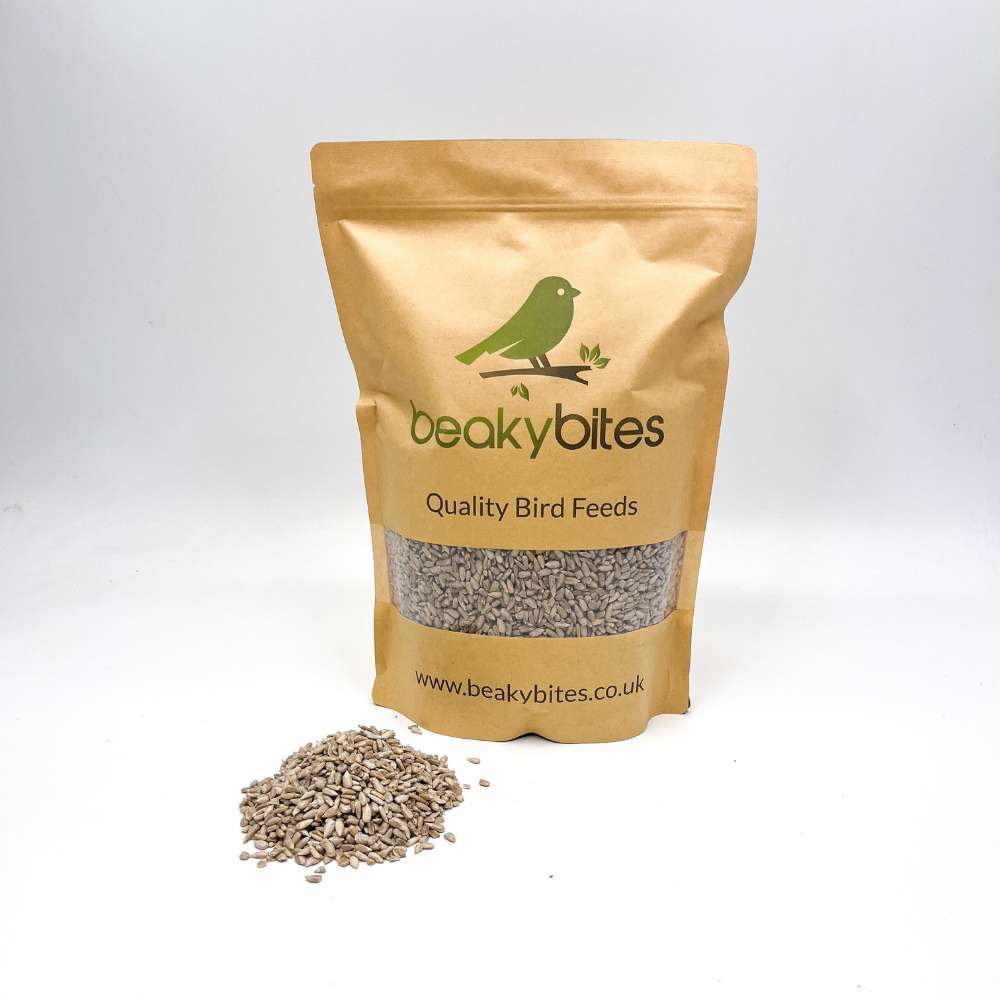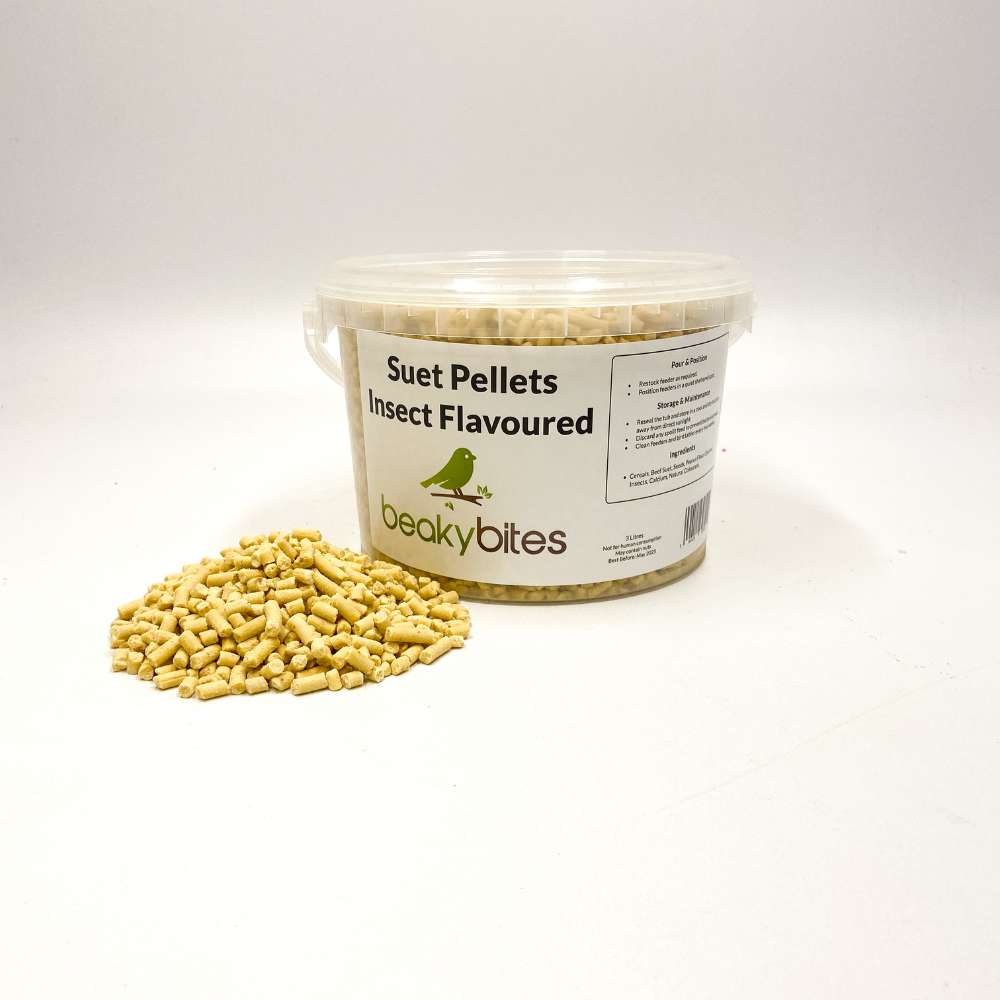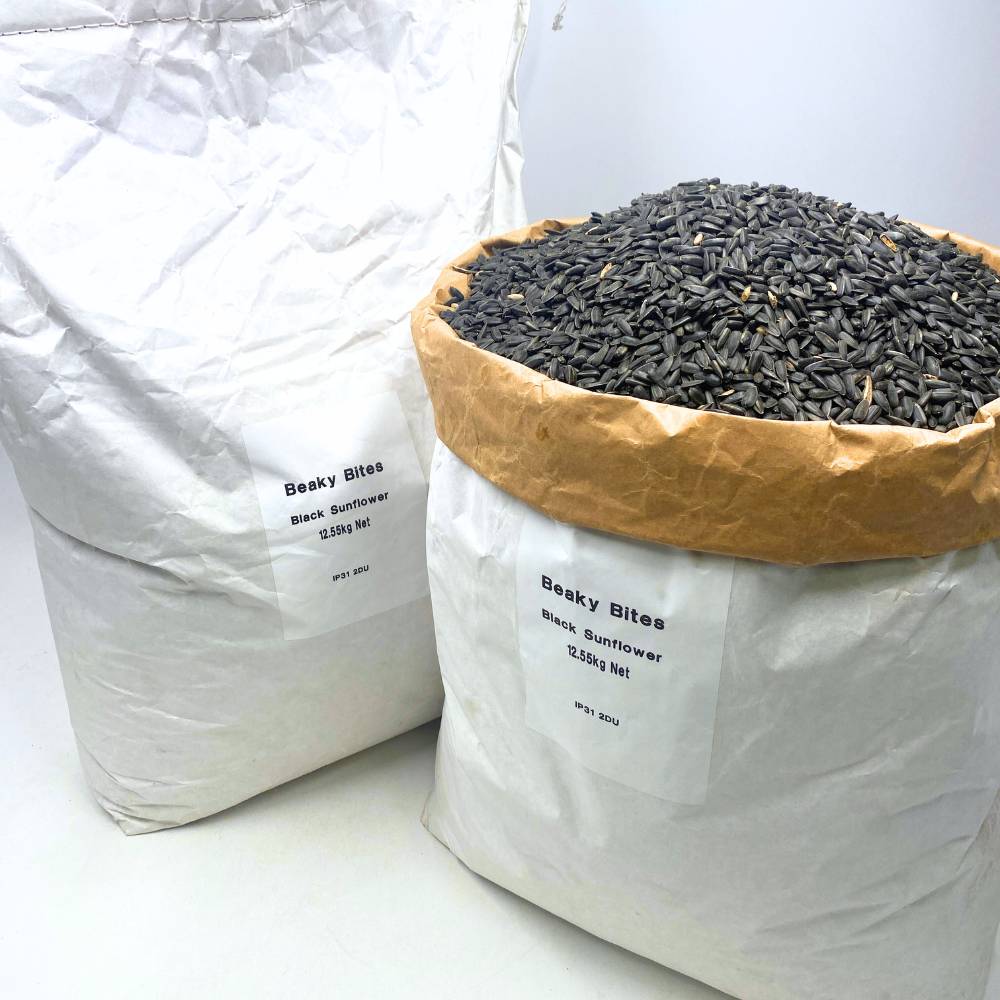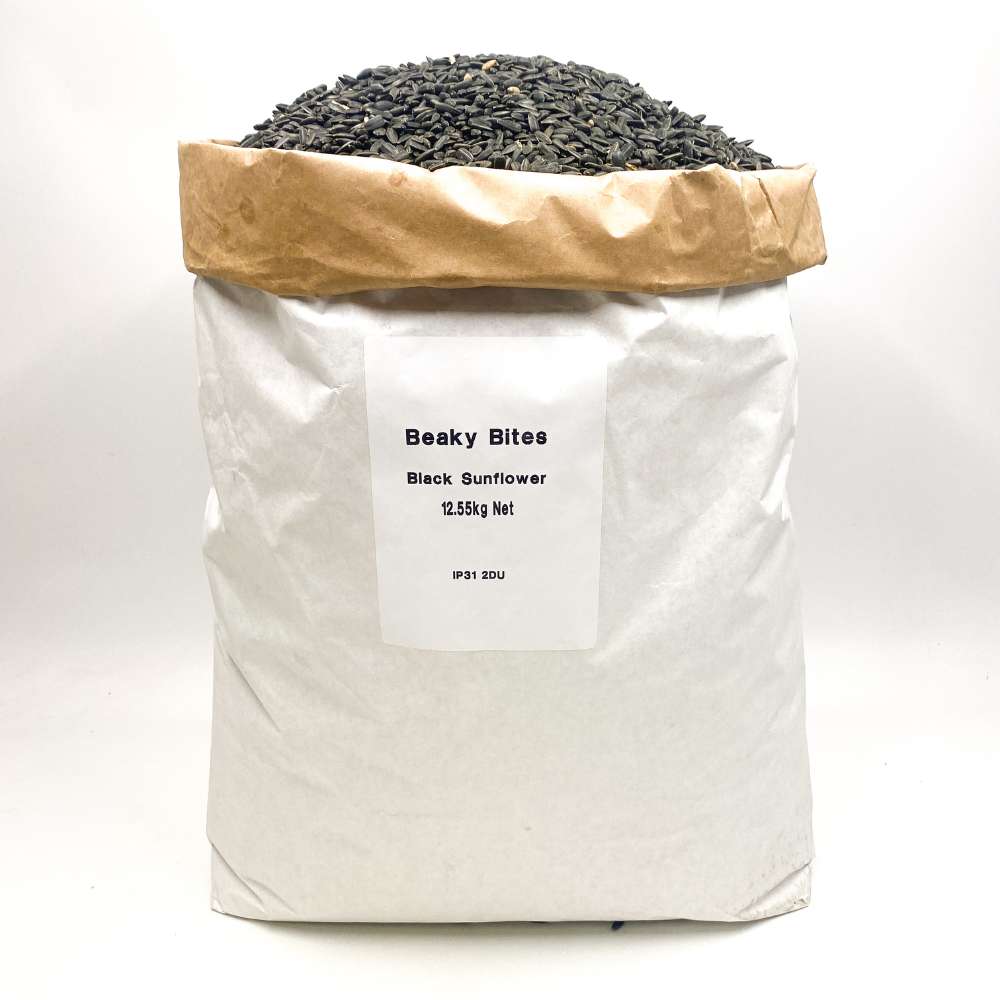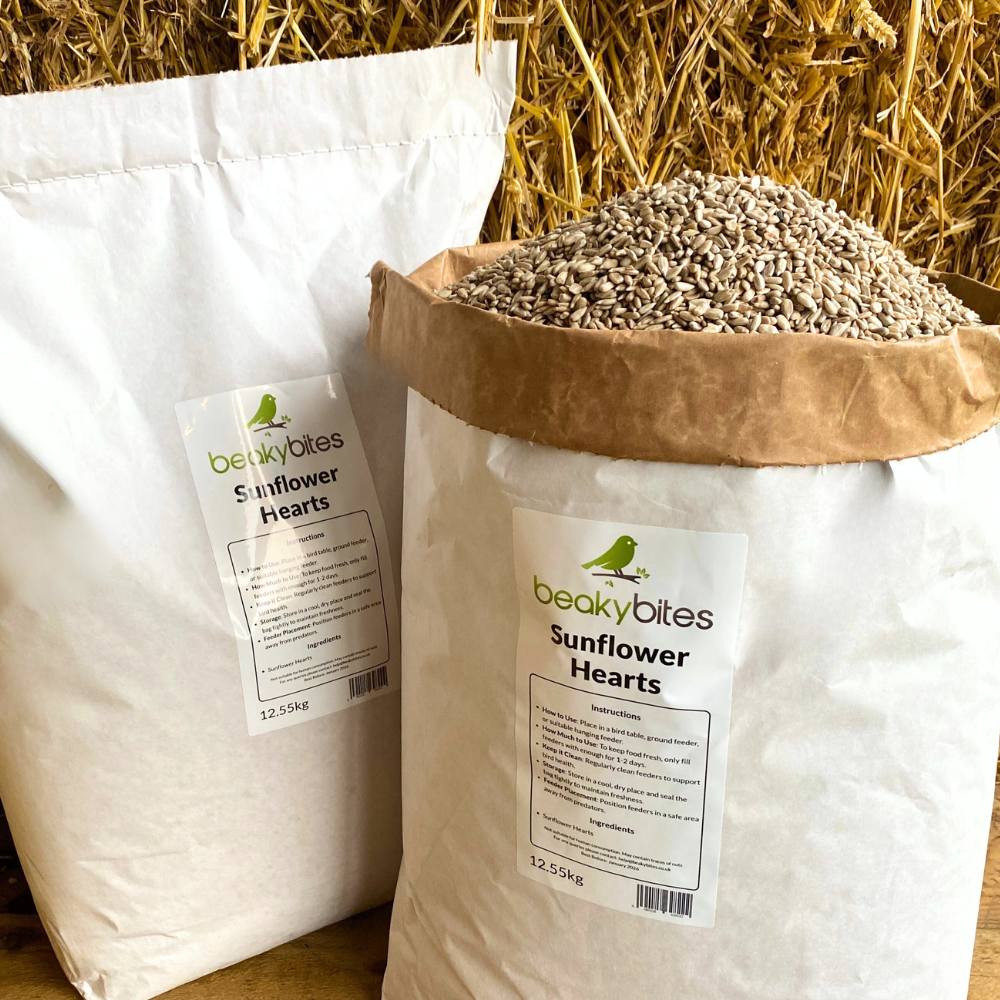Bird Fact File: Robin

Welcome to our bird guide series brought to you by Beaky Bites! In each post, we'll take a closer look at a beloved UK garden bird to help you better understand and appreciate these amazing birds. From identifying distinct features to discovering their favourite foods and nesting habits, this series aims to provide an overview of our feathered wildlife.
Let's Meet the Robin
Robin Fact File | |
|---|---|
| Size: | 14cm, head to tail |
| Wingspan: | 20-22cm |
| Weight: | 14-21g |
| Colours: | Red, Orange, Brown, Cream, White, Yellow and Grey |
| Eggs: | 4-6 eggs per brood, 2-3 broods a year |
| Nesting: | Often close to the ground, anywhere small and concealed |
| Population Status: | Stable |
The Robin, one of our most loved birds, is easy to spot with its orange-red breast and face, against its brown and grey feathers. This little chap can be found in woodlands, gardens and parks, often following gardeners in the hope of finding worms. With the Latin name Erithacus rubecula, the robin is a member of the Muscicapidae family, a group of small insectivorous birds. There are around 7 million breeding pairs in the UK so it’s a common sight in gardens all year round, especially in winter when it’s a Christmas favourite.

Appearance and Behaviour
Robins are lovely little birds with bright red orange chests that stand out anywhere. Both males and females have this colouring, with brown bodies and a fine pointed beak for catching insects. Juveniles are a bit different, no red breast and instead speckled brown until their adult feathers come through.
Robins have a varied diet that changes with the seasons, they eat insects, worms, seeds and fruits. In the spring and summer they eat insects and worms, in the colder months they eat seeds, suet and even dried mealworms, so they are a common visitor to feeders. Their slim beaks are perfect for plucking out insects and soft seeds.
Robins are fearless, often seen alone rather than in flocks as they are quite territorial especially in the winter. They can be found in gardens, parks, woodlands and hedgerows and will follow gardeners hoping for disturbed insects. Males sing their sweet mournful song all year round, especially in the winter to mark their territory and attract a mate in the breeding season. In gardens their friendly curious nature makes them a joy to watch as they hop confidently up to feeders or patio tables.
.jpg)
Where do They Hang Out and Eat?
Robins are clever feeders, they adapt their diet to the seasons. In spring and summer they eat insects, worms and the odd seed to fuel their energy as they raise their young. You may see them dashing across lawns or perched low in bushes, pouncing on any small insect or worm they can find.
As autumn and winter set in and natural food sources dwindle robins turn to berries, seeds and any food left out for them in gardens. They love mealworms, sunflower hearts and suet which gives them the fat they need to keep warm. Their visits to garden feeders bring a splash of colour and a warm feeling especially on frosty mornings.
Robins can be found in many habitats, gardens, parks, woodlands and hedgerows especially where there is dense vegetation for nesting and foraging. A garden with feeders full of mealworms, seeds and suet will attract these bold birds. Watching a robin’s antics and hearing its song is a real birding bonus.

Breeding and Nesting
Robins start breeding in early spring, usually around March and can have two broods in a season if conditions are good. A typical clutch is 4-5 eggs which the female incubates for about 13-14 days. Once the eggs hatch both parents work hard to feed the chicks a balanced diet of insects, worms and occasionally seeds. The young robins stay in the nest for about two weeks before they fledge.
During breeding season robins become very territorial. Males sing a sweet melody to defend their territory and attract a mate. Once a pair have claimed a territory they’ll defend it fiercely especially as the chicks grow and need constant feeding.
The female robin builds the nest, weaving twigs, grass and moss into a cup. She’ll line it with softer things like feathers and fur for warmth and comfort. Nests are usually hidden in dense bushes, hedgerows or even sheltered garden corners, to protect from predators and the elements, so the young can grow until they’re ready to fly.

Attracting Them to Your Garden
Robins eat insects, seeds and berries so if your garden has these natural food sources they will come. They visit feeders in the colder months but you can encourage even more visits by planting native shrubs and trees that produce seeds, fruits and berries all year round. Feeders filled with mealworms, sunflower hearts and suet pellets are a real treat for robins especially in autumn and winter when natural food is scarce.
Suet is a great addition to any garden, full of fats and energy to keep robins and other birds strong in the winter months. Offering suet in feeders or on a feeding platform means a guaranteed food supply when insects and berries are hard to find.
Having a bird friendly habitat with native trees, shrubs and plants that provide food and shelter all year round is especially helpful during the breeding season from spring to summer. Robins like gardens with a mix of dense shrubbery for nesting and open space for foraging so a well designed garden with both will make them feel at home. Adding a nest box may even encourage robins to breed in your garden and you’ll get to see their family life up close.
Robins have it all in a garden with native plants that produce berries and insects and feeders with dried mealworms and suet.

Conclusion
Robins like a garden with insects, berries and suet and shrubs and trees to forage and nest. They like dense bushes for shelter or even a nest box nearby. Add these and you’ll get robins in your garden and a splash of red breasted charm and song in your outside space.
Whether you're an experienced bird enthusiast or just starting out, welcoming great tits into your garden is a delightful and rewarding experience. Stay tuned for the next post, where we'll discover another fascinating UK garden bird!
Frequently Asked Questions
How can I tell the difference between a male and female robin?
- Answer: Male and female robins look very similar, both with the same red breast, making it difficult to tell them apart by sight alone.
Why are robins so territorial, and do they fight with other birds?
- Answer: Robins are territorial year-round, especially in winter, often defending their feeding grounds and nesting areas with song and displays.
What should I feed robins during winter to help them survive the cold?
- Answer: During winter, robins benefit from high-energy foods like suet, sunflower hearts, and mealworms to help them stay warm and energised.
Do robins migrate, or are they in the UK all year round?
- Answer: Robins are resident birds in the UK, staying all year round rather than migrating.
Can I encourage robins to nest in my garden, and how?
- Answer: You can encourage robins to nest in your garden by providing a sheltered nest box and dense shrubbery for cover and nesting.




